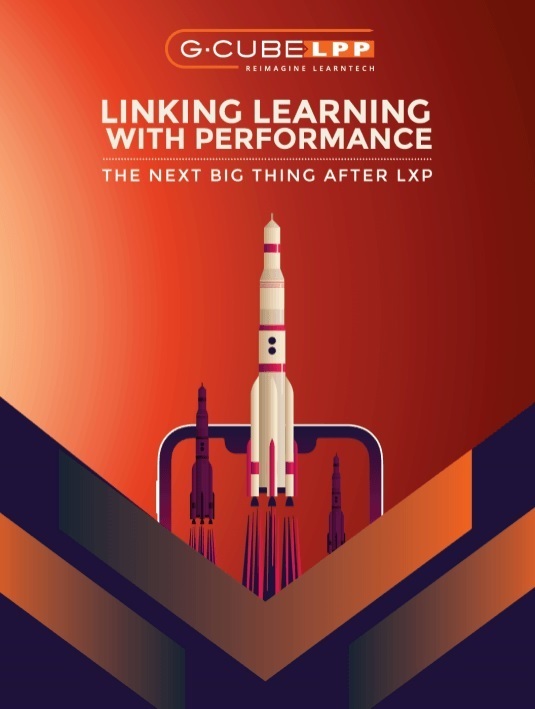What Really Impacts Employee Performance?
Before organizations begin to effectively manage employee performance issues, they must find out whether or what kind of difficulties their employees may be facing at work that might prevent them from performing to the best of their capabilities. Employee performance is directly linked to a variety of workplace factors. If any of those is amiss, it impacts employees’ attitude, efficiency, and productivity. We can overcome regular job challenges by identifying the pain areas and taking steps to diminish them.

eBook Release
Linking Learning With Performance: The Next Big Thing After LXP
When learning and performance are linked, the employees are pulled together in the same direction and to the best of their capacities.
Workplace Environment
A challenging workplace environment impacts and disrupts employees’ performance. An employee’s experience may worsen due to:
Lack Of Appreciation In The Workplace
Lack of appreciation impacts an employee’s level of productivity. 69% of employees [1] feel they would work harder if their efforts were better recognized. When employees are not appreciated, they begin to feel as though it doesn’t matter to the organization how hard they work, and this feeling results in minimum effort on their behalf.
Incompetent Management
Job performance naturally sinks in an environment with poor management. Having a manager who does not respect his employees or fails to meet their needs is quite a strong reason to cause unhappiness and distress among employees. And unhappy employees are the least productive employees.
76% of the Gen Z workforce [2] believes that learning is the key to a successful career. The right learning interventions offer ample growth opportunities to employees and do not let their careers stagnate. This boosts confidence and strengthens relations with their managers because good managers garner more reliability.
Insufficient Resources
If employees would not have access to the proper tools required to do their jobs, they will not be able to perform efficiently. Besides, the use of technology is critical for performance and productivity. 75% of global organizations [3] envision an increase in their use of technologically productive tools because they help save a lot of time and money.
Motivation
Motivation is the primary force that drives employees to action. It emulsifies their ability and willingness to work with a goal-directed approach. This helps them promote workplace performance.
According to Gallup’s State of the Global Workplace report [4], 85% of employees are not engaged or actively disengaged at work. This is a huge distraction to the productivity levels of the workforce and can easily infect an organization’s workplace culture. The employees must be highly motivated to be able to achieve organizational goals. Managers much coach and counsel employees to help them arrive at a positive level of engagement.
Connecting Learning To Outcomes: Skills And Knowledge
One of the most significant factors that help employees become successful at their job is whether they are skilled or knowledgeable enough.
If employees are assigned tasks without being imparted adequate training, they will make mistakes which may only increase if not addressed in a timely manner. With mistakes, their frustration level would also increase, and they would begin to feel incompetent for not being able to meet the desired goals. This would cost the organization time, money, and productivity.
Having a proper training and learning strategy in place is the answer! Instead of keeping up with the changing workplace dynamics, organizations must be ready to step ahead of the change and embrace all that it brings by injecting continuous learning. A continuous learning culture that supports employees not just at the start of their professional journey but throughout their journey with the organization is what helps them evolve and improve upon their skills.
Getting the most out of their employees starts with understanding that, as an employer, it is the responsibility of the organization to ensure that the employees must be nurtured for success. Organizations must provide the resources, recognize the efforts of their employees, and remove other obstacles that impact the employees’ level of productivity and the resultant job performance.
Generally, managers make decisions about employees’ performance based on their subjective knowledge. This is done through surveys, assessments, etc., which are undertaken much later, i.e., when the employees’ performance has already begun to drop. But, if this process is automated, relevant support can be given just in time when it is required. The skill gaps can be addressed with the help of personalized modules [5] to help employees overcome workplace challenges. This will boost employees’ confidence and enhance productivity. And as we know, employee productivity is the predominant attribute of successful organizations.
Hence, it is important to align learning interventions with business objectives. Well-trained employees are confident and adept in undertaking their responsibilities, thereby yielding positive results for themselves as well as for the organization.
Conclusion
Download the eBook Linking Learning With Performance: The Next Big Thing After LXP to discover how you can cultivate a continuous learning mindset in your organization, drive performance, and choose the right learning platform.
References
[1] 5 Employee Feedback Stats That You Need to See
[2] Here Is Why Gen Z Believes That Learning Opportunities Are an Important Recruiting Tool
[3] 93 Compelling Productivity Statistics
[4] Dismal Employee Engagement Is a Sign of Global Mismanagement

